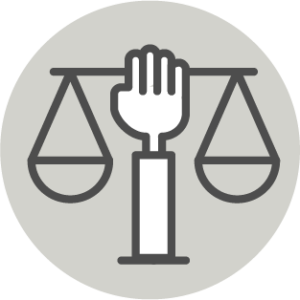Overview

Philosophies and Approaches
Culturally Responsive Indigenous Evaluation
Striving for sovereignty and self-determination
Description
Indigenous evaluation frameworks (IEF) situate an evaluation in context and relationship to the place, setting and community in which the evaluation is carried out (LaFrance & Nichols, 2008). LaFrance and Nichols (2008) identify four key values that must be included in creating IEF: being a people of a place, recognizing gifts, honoring family and community, and respecting sovereignty. IEF is a holistic framework that is conceptualized, designed and carried out in a nonlinear way, with relationships and sub-relationships concurrently informing one another and the evaluation as a whole. Indigenous evaluators and authors will often say: “We work with you, not on you” when serving an Indigenous community or client.
Unique Contributions
Culturally responsive Indigenous evaluation is based upon Tribal Critical Theory (TCT), rather than Critical Race Theory (CRT), which is based upon African American history scholars. CRIE also focuses on sovereignty, which is unique from the other approaches. TCT posits that colonization is part of society (Brayboy, 2005 as cited in Bowman et al., 2015) and recognizes that Indigenous peoples strive to attain tribal sovereignty, autonomy, self-determination, and self-identification. TCT highlights the importance of tribal beliefs, philosophies, and customs for understanding the lived experiences of Indigenous people as well as the differences that occur between individuals and groups. It also recognizes the power of story and storytelling as a credible and reliable source of data and a foundation of theory. Thus, CRIE, via TCT, emphasizes the interconnectedness between theory and practice, and demands that researchers work toward social change (Bowman et al., 2015).
History
Culturally responsive indigenous evaluation (CRIE) has roots in tribal critical theory which is a theoretical framework and method used to examine Indigenous people throughout the world for personal and tribal empowerment and liberation (Brayboy, 2005 as cited in Bowman et al., 2015). TCT holds that colonization is endemic to society. Brayboy’s summary of TCT (2005 as cited in Bowman et al., 2015) explains that this theory recognizes that Indigenous peoples strive toward tribal sovereignty, tribal autonomy, self-determination, and self-identification. This perspective can conflict with governmental policies that are tied to the problematic goal of assimilation. TCT emphasizes the importance of tribal beliefs, philosophies, and customs for understanding the lived reality of Indigenous people as well as the differences among individuals and groups. It also recognizes the importance of story as a legitimate data source and building block of theory.
PRINCIPLES
 Promotion of equity and social justice; attendance to issues of power
Promotion of equity and social justice; attendance to issues of power
Social justice itself is not specifically mentioned; instead, it is assumed to be “baked“ into the theory of culturally responsive Indigenous evaluation (CRIE) and tribal critical theory (TCT). The call for CRIE evaluators and researchers to be intimately involved in social change and calling out injustices is specifically mentioned (Bowman et al., 2015). Bowman and colleagues (2007, as cited in 2015) discuss indigenizing research and evaluation via seven steps, including (1) utilizing traditional-knowledge councils and elders; (2) using oral and written traditional knowledge and Indigenous institutions; (3) providing traditional gifts as part of the evaluation process to show gratitude for allowance into the community; (4) understanding that Indigenous intellectual knowledge, approval of evaluation, and ownership of data by the tribal community is controlled by theIndigenous community and is formalized through memoranda of understanding; (5) understanding that evaluation data is used to inform and improve (not pathologize) Indigenous communities and institutions; (6) understanding that evaluation work is examined by traditional knowledge councils to prohibit racism and colonization, and to promote value and use of Indigenous ways of knowing, knowledge and processes; and (7) making evaluation useful to community needs, and through Indigenous control/ownership of data. That said, neither social justice nor equity can exist without true decolonization. Decolonization — which would include reparations and the return of stolen lands and property — is a foundation of equity, social justice, and transformation.
 Engagement of partners and community members, particularly those with less social power, during all phases of the evaluation
Engagement of partners and community members, particularly those with less social power, during all phases of the evaluation
In the best-case scenario in culturally responsive Indigenous evaluation, the team would be led by Indigenous evaluators and stakeholders. In their article focusing on tribal populations’ relationship with federal governments, Waapalaneexkweew (Nicole Bowman, Mohican/Lunaape) and Dodge-Francis (2018) provided an example in which the evaluation team asked tribal stakeholders for help in guiding the activities of the evaluation. The project team used multiple strategies to receive varied and diverse stakeholder feedback throughout the study design, testing and full data-collection process. This included meeting documents and formal administrative responses/reactions to the project and team, including production and dissemination of the final report.
 Composition of evaluation team and reflection on assumptions and biases
Composition of evaluation team and reflection on assumptions and biases
Although the team might be composed of non-Indigenous evaluators, the team and evaluation plan must be led by and reflective of Indigenous practices (Cram et al., 2015). Evaluators must be prepared to include, if not be grounded in, multicultural validity (Bowman et al., 2015).
 Consideration of cultural and historical contexts and different worldviews
Consideration of cultural and historical contexts and different worldviews
Understanding historical context in this field is essential; researchers must acknowledge and address the dynamics of power (Gitlin, 1994 as cited in Bowman et al., 2015) and disempowerment when creating research or evaluation studies conducted with Indigenous people. Prior to European contact, Indigenous people inhabiting North America used their own systems of self-governance to sustain high levels of health, education, and social and community welfare of tribal people. Each tribe was unique in its culture, customs, worldview, and traditions, and other teachings were grounded in a way of life that was distinct to each tribe. In a CRIE framework, it is important to understand and consider the unique worldview(s) of the tribe(s) impacted by the evaluation (University of Toronto Press, 2020).
 Intentional methods and thoughtful data collection
Intentional methods and thoughtful data collection
In regard to international methods and data collection, Bowman et al. (2015) states, “Tribal communities must not lose sight of the quest to create or attain a culturally responsive evaluation system that embraces their hegemonic ability to dictate the mission, infrastructure, or organizational framework” (pg. 354). To that end, the context of Indigenous evaluation addresses issues related to the cultural/traditional context and that define the design of the evaluation, including gaining access to the right of knowledge and understanding how that knowledge is transmitted (Bowman et al., 2015).
 Intentional analysis and inclusive interpretation
Intentional analysis and inclusive interpretation
Bowman et al. (2015) notes that the evaluation work is designed to allow for continuous program evaluation and quality improvement, and is built upon human and infrastructure capacities for future evaluations. Analysis and interpretation are guided by cultural perspective and context. Member checking, a method that improves the credibility of qualitative research by matching the evaluator/researcher’s data and analysis with participants’ and community interpretations, is often used in decolonizing research to improve credibility of qualitative data (Smith, 2012 as cited in Bowman et al., 2015). Tribal, community elders, and other representatives are key participants in the analysis and interpretation of the data.
 Accessible and actionable evaluation findings
Accessible and actionable evaluation findings
A culturally responsive Indigenous evaluation (CRIE) is designed to be useful within the community and community context, and be reflective of the communities, stories, traditions, and culture. Results and use are designed to underscore the political and legal context of Indigenous communities (Bowman et al., 2015). Thus, dissemination of results and findings are reflective of the culture and may include traditions unique to Indigenous populations. Using community and experiential knowledge to document evidence-based practices that guide decision-making and a future sustainable vision are considered key features of CRIE (Waapalaneexkweew, 2018). Key questions to consider in the evaluation of findings are: How can capacity among community members be built? What did community members learn? What did they do with what they learned? (Chouinard & Cousins, 2007)
© 2022 SLP4i and The Colorado Trust, authored by Katrina Bledsoe, Felisa Gonzales, and Blanca Guillen-Woods. This work is protected by copyright laws. No permission is required for its non-commercial use, provided that the authors are credited and cited.
For full citation use: Bledsoe, K., Gonzales, F., & Guillen-Woods, B*. (2022). The Eval Matrix©. Strategy Learning Partners for Innovation https://slp4i.com/the-eval-matrix.
*These authors contributed equally to this work with support from the Annie E. Casey Foundation and The Colorado Trust.
The Eval Matrix site designed by KarBel Multimedia
